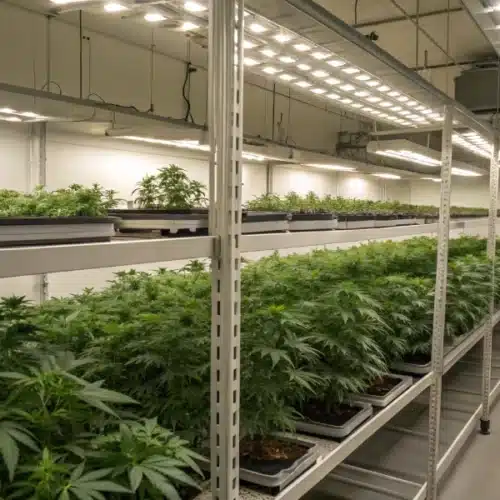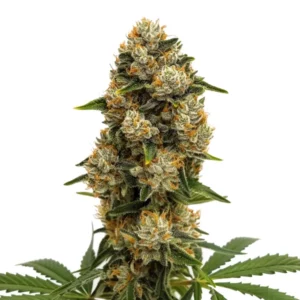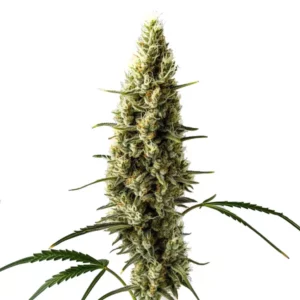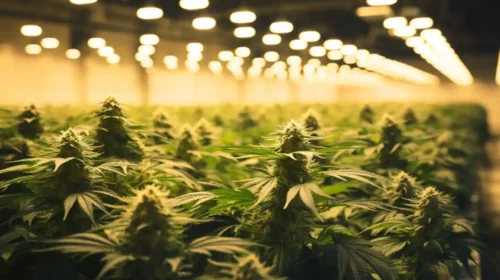When you’re diving into Autoflower Week 5, you’re stepping into one of the most dynamic phases of your cannabis cultivation journey. Whether you’re a seasoned grower or just starting out with online seed purchasing, this phase brings a mix of exciting transitions and necessary care adjustments.
Mastering Autoflower Week 5 techniques is key to turning your crop into a yield powerhouse. The following sections break down every key aspect with a professional yet fun approach.
What to Expect During Week 5 of Autoflower Growth
Transition to Flowering Stage
Your autoflowers begin shifting their energy from vegetative growth to the flowering phase. At this stage, plants are preparing to form buds rather than just growing leaves and stems.
This change is subtle yet significant. As you observe your plants during Autoflower Week 5, keep an eye on the way energy is reallocated. Adjusting your care routine now will support the upcoming flowering phase.
Changes in Plant Appearance
During this week, small changes in appearance become noticeable. Leaves might show minor stress signals and buds may start to form at the nodes.
These visual cues confirm that your autoflowers are entering the flowering phase. Recognizing these signs during Autoflower Week 5 allows you to adjust feeding and watering routines effectively.
Average Height and Size by Week 5
By week 5, many autoflowers typically measure between 20 to 40 centimeters in height. Growth rates can vary depending on the strain and the environment.
Even if your plants seem modest in size now, rest assured that with proper care during this week, impressive results can follow in the upcoming flowering stage.
Promos & Deals
Ideal Environment for Autoflowers in Week 5
Recommended Temperature and Humidity
Maintaining the proper environmental conditions is essential. A temperature range of 20°C to 28°C (68°F to 82°F) is ideal for healthy growth while preventing heat stress.
Humidity levels around 40% to 50% are recommended to minimize the risk of mold or mildew, especially as buds begin to form during Autoflower Week 5.
Light Schedule and Intensity Adjustments
Most autoflowers do well with a consistent light cycle, usually around 18 hours on and 6 hours off. This setup provides steady energy for growth and bud development.
In Autoflower Week 5, slight tweaks to light intensity can enhance bud formation without stressing the plants. Finding this balance is key.
Optimizing Air Circulation and CO2 Levels
Good airflow is crucial during this phase. It not only regulates temperature and humidity but also strengthens your plant’s structure.
Implementing fans or ventilation systems along with monitoring CO2 levels can boost growth during this week. A well-circulated environment leads to healthier, more resilient plants.
Nutrients and Feeding Schedule
Importance of Balanced Nutrients
As your plants transition, providing balanced nutrients becomes essential. A mix of nitrogen, phosphorus, potassium, and micronutrients is needed for energy redirection towards bud formation.
Online seed purchasing often gives you access to premium nutrient products. This means you can balance your feed easily and ensure your autoflowers thrive in Autoflower Week 5.
Adjusting NPK Ratios in Week 5
During week 5, many growers adjust their nutrient regimen by reducing nitrogen and increasing phosphorus and potassium. This shift supports the budding process.
Keep a close eye on your plants and make gradual changes. Such careful adjustments during this week ensure that your crop channels energy into robust flower development.
Common Nutrient Deficiencies and How to Fix Them
Your plants might exhibit nutrient imbalances such as yellowing leaves or burnt tips. These symptoms indicate that some essential elements may be lacking or over-applied.
Addressing these issues quickly with targeted supplements is vital. By fine-tuning your nutrient schedule during Autoflower Week 5, you prevent long-term damage and set the stage for a healthy bloom.
Watering Autoflowers in Week 5
Best Practices for Watering
Water management is fundamental during this growth phase. Thorough watering that ensures runoff from the container helps all roots receive adequate hydration.
In this weed, achieving the right balance is crucial. Over-watering can lead to root rot, while under-watering can stunt growth.
Monitoring Soil Moisture and Drainage
Monitoring soil moisture is essential. Whether using a moisture meter or simply feeling the soil, ensure it remains moist but not saturated.
Proper drainage is equally important. By keeping an eye on soil moisture and drainage during Autoflower Week 5, you help your plants absorb nutrients effectively.
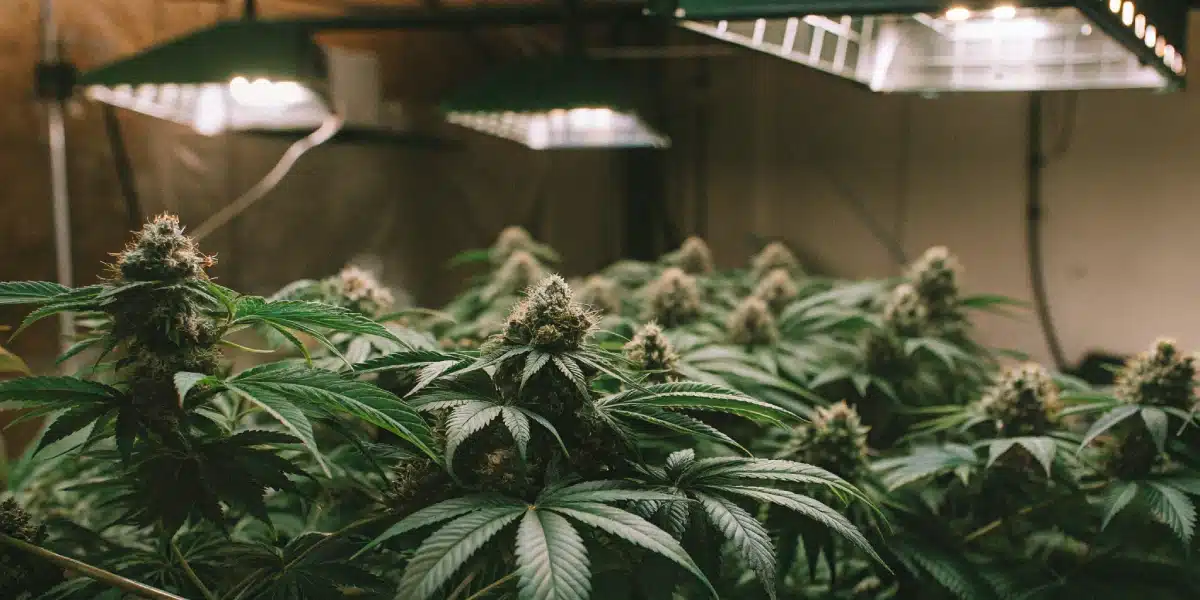
Common Issues in Week 5
Leaf Discoloration and Nutrient Burn
Leaf discoloration and nutrient burn can appear during this phase. These issues often result from too high a concentration of nutrients or sudden environmental changes.
Regular inspections allow you to catch these symptoms early. Addressing any imbalances during Autoflower Week 5 will keep your plants on track.
Pest and Disease Prevention
Pests and diseases are always a threat during the flowering phase. Maintaining a clean, controlled environment is critical to prevent infestations.
Regularly inspect your plants and take preventive measures, such as proper ventilation and stable humidity. These steps go a long way in keeping your autoflowers healthy during Autoflower Week 5.
How to Manage Stunted Growth
Stunted growth is another common issue that may arise if your plants experience stress from nutrient or water imbalances. Early detection is key.
By adjusting your nutrient and watering schedules promptly, you can mitigate stunted growth. Keeping detailed logs during Autoflower Week 5 will help you catch issues before they escalate.
Training Techniques to Maximize Yield
Low Stress Training (LST)
Low Stress Training (LST) is an effective technique that encourages horizontal growth. By gently bending and tying down branches, you can create an even canopy.
This method maximizes light exposure and promotes uniform bud development. Practicing LST during Autoflower Week 5 is a smart way to boost yield.
Defoliation and Its Benefits
Defoliation can also be beneficial when applied strategically. Removing excess foliage allows more light to reach the inner parts of the plant.
Be conservative with defoliation. The goal is to enhance bud development without causing stress. This method, when used wisely in Autoflower Week 5, can lead to better bud quality.
Signs of Overtraining to Avoid
While training is useful, overtraining can be harmful. Too much manipulation can stress the plant, leading to issues like leaf drop or stunted growth.
Pay attention to your plants’ responses. Observing the signs of overtraining during Autoflower Week 5 helps you apply techniques just right for maximum benefit.
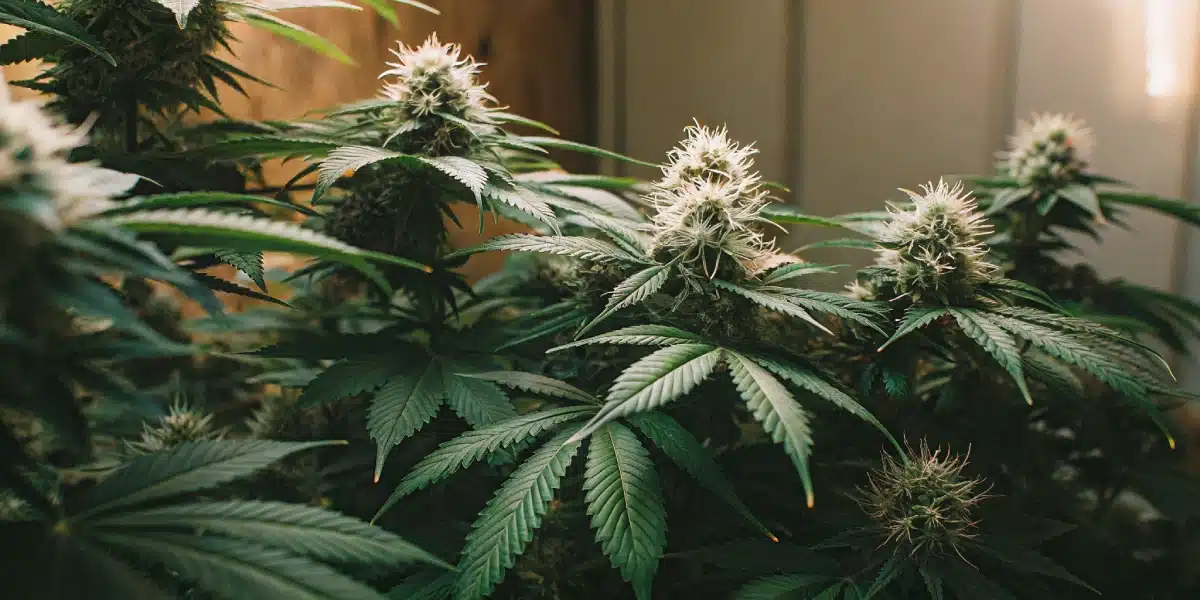
When to Start Bloom Boosters
Timing Your First Bloom Nutrients
Introducing bloom boosters at the right time is essential. As initial signs of flowering emerge, you can start applying bloom nutrients to enhance bud development.
Monitoring your plants closely will help you identify the perfect moment during Autoflower Week 5. Timing is everything when it comes to boosting yield.
Key Ingredients in Bloom Boosters
Bloom boosters typically contain a blend of phosphorus, potassium, and trace minerals. These ingredients work together to support dense, potent bud growth.
Choosing high-quality bloom boosters is important. Trusted online seed purchasing sources often offer these products, ensuring your plants receive the best care during Autoflower Week 5.
Mistakes to Avoid with Flower Enhancers
Even when using top-tier products, certain mistakes can hinder progress. Overapplication or incorrect timing can stress your plants and reduce the effectiveness of flower enhancers.
Follow the manufacturer’s guidelines carefully and monitor your plants’ responses during Autoflower Week 5. This careful approach helps you avoid setbacks and supports a robust flowering phase.
Monitoring Trichomes and Pre-Flowering Development
Recognizing Early Signs of Flowering
Observing your plants closely during week 5 is key. Early signs like the formation of small pistils and increased trichome production signal that flowering is beginning.
Recognizing these indicators during Autoflower Week 5 lets you adjust your care routine accordingly. Being proactive at this stage is a great way to ensure success.
Importance of Trichome Development
Trichomes are essential not only for potency but also for protecting your cannabis plants. Their density and appearance can reveal much about your plants’ overall health.
During Autoflower Week 5, keeping an eye on trichome development offers clues about the maturity and potential quality of your buds. This insight is invaluable for planning the next steps in your grow.
Planning for Harvest Based on Trichomes
Tracking the changes in trichomes allows you to time your harvest with precision. Whether you prefer a clear, milky look or wait for more amber hues, trichome development is your guide.
Regular monitoring during this week helps you plan for a harvest that maximizes both quality and potency. Detailed observations now can lead to a stellar yield later.
Faqs About Autoflower Week 5
What are the key signs that my autoflowers are transitioning to flowering in week 5?
Subtle changes such as the emergence of small pistils and initial bud formation are key indicators. Leaves might also show minor stress signals as the plant redirects energy.
These signs are clear evidence that your plants are moving into the flowering phase during Autoflower Week 5. Observing these details helps you adjust your care regimen in time.
How do I adjust my nutrient schedule for Autoflower Week 5?
Gradually reduce nitrogen levels while boosting phosphorus and potassium. This adjustment encourages bud formation and supports the flowering process.
Make these changes slowly and monitor your plants’ reactions closely during Autoflower Week 5 to maintain the right balance.
What environmental conditions are optimal during this stage?
Ideal conditions include temperatures between 20°C to 28°C (68°F to 82°F) and humidity levels around 40% to 50%. Such conditions help prevent stress and fungal issues.
Good air circulation and a stable light schedule also contribute to a healthy environment during Autoflower Week 5. Consistency is key to success.
Can I use training techniques like LST during Autoflower Week 5?
Absolutely! Techniques like Low Stress Training (LST) are very effective at this stage. They help create an even canopy and maximize light exposure.
Implementing LST during Autoflower Week 5 can lead to more uniform bud development and ultimately boost your yield.
Keeping a detailed log of your observations during Autoflower Week 5 is an excellent strategy to catch and correct problems before they worsen.
Every adjustment you make during Autoflower Week 5 plays a significant part in setting the stage for healthy bud development and a high-yield harvest. Combining smart environmental management with targeted nutrient and watering strategies ensures success in your cannabis garden.
Embrace these tips and techniques to support your autoflowers, and remember that online seed purchasing offers access to the best genetics and products available. Happy growing, and enjoy the fun journey of cultivating your cannabis crop!






